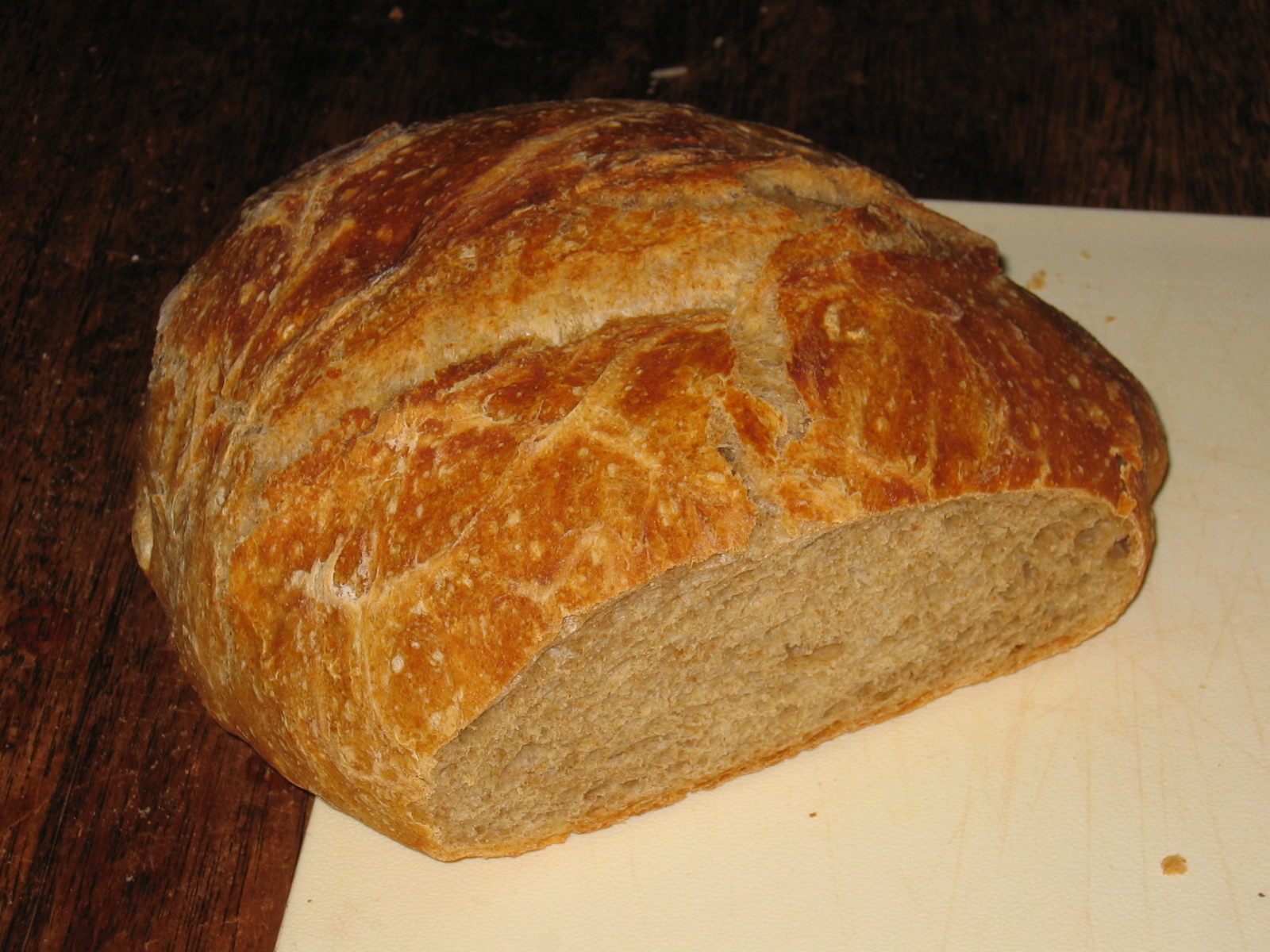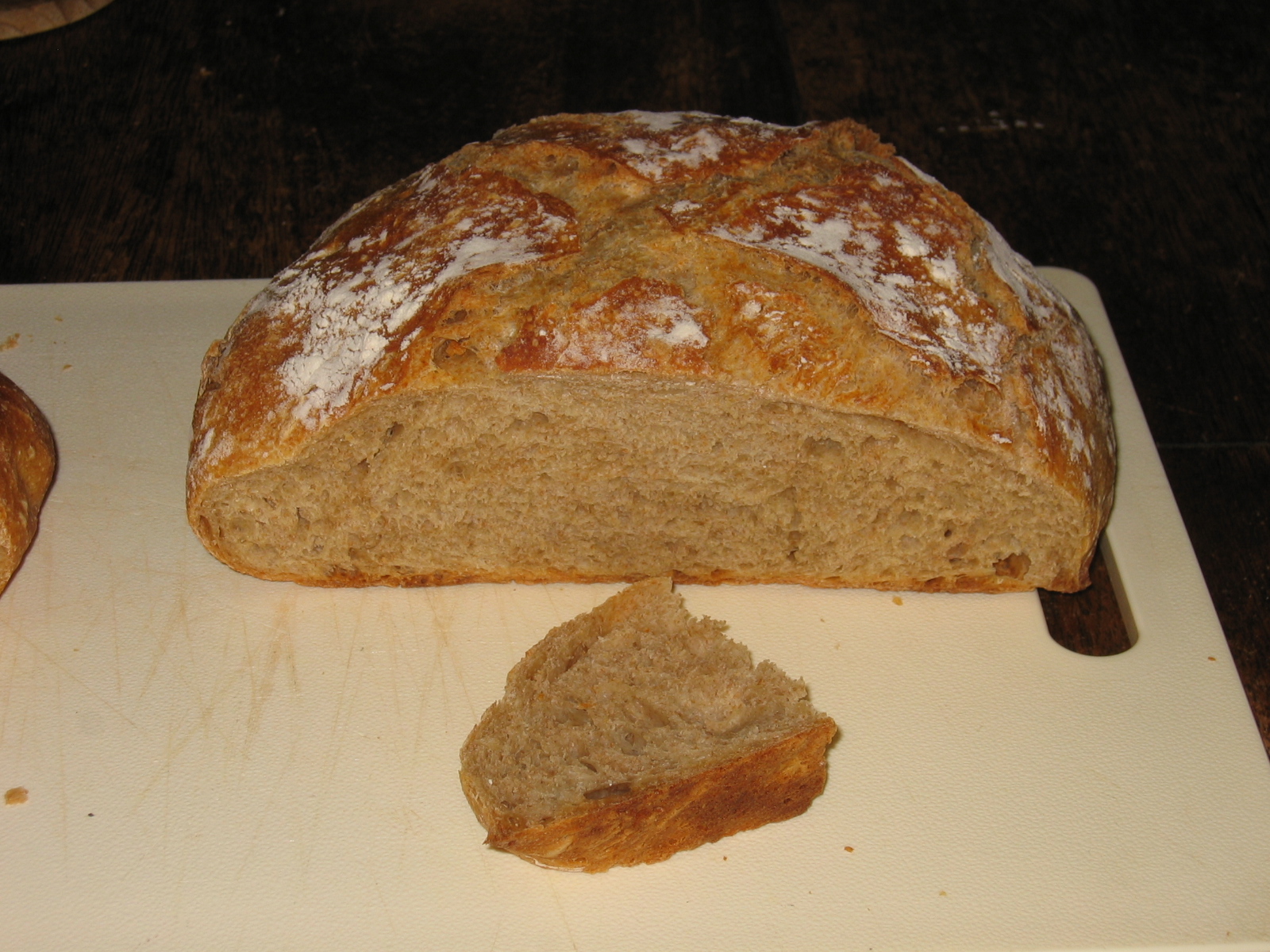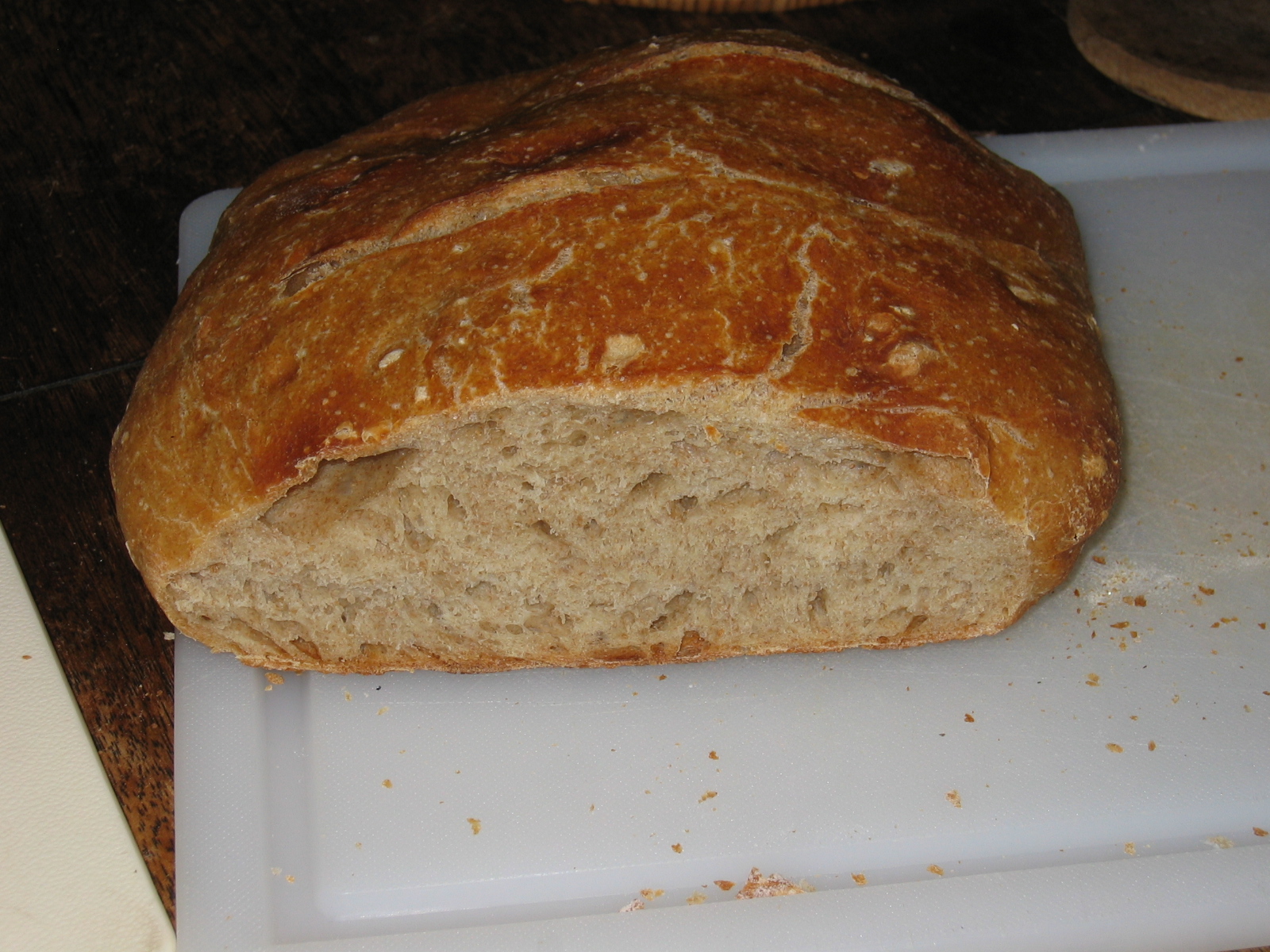For Christmas, we spent the entire day baking the bread we started on Christmas Eve. We made some changes to the Cooks Illustrated No-Knead Bread recipe. The basic recipe is as follows:
15 ounces of flour (weighed) or 3 cups
1/4 teaspoon yeast
1 1/2 teaspoons table salt
3/4 cup plus 2 tablespoons water
1/4 cup plus 2 tablespoons lager or pilsner beer
1 tablespoon white vinegar
Mix the dry ingredients, then stir in the wet ones and cover with plastic wrap. Let it rest for at least 8 hours. Knead briefly and place the dough on parchment paper to rise for 2 hours. Slash the top before baking. Preheat a covered dutch oven and bake the bread, covered, for 30 minutes, then uncovered for 20-30 additional minutes. The recipe calls for a 500-degree preheat and a 425-degree bake.
To that basic recipe, we made the following changes to each batch. In all cases, we replaced 5 ounces (or 1 cup) of the regular flour with whole wheat flour. After our last attempts, I did some online checking and talked to local breadmakers. Based on those discussions, we had several more things to try, including adding more water to the initial dough, lowering the start and baking temperatures, and eliminating the honey to prevent the crust from getting too dark. To all the sets, we ended up adding 3 extra tablespoons plus a teaspoon of water. It took that much for the dough to incorporate all of the flour. We bought new yeast just in case our old yeast was too old.
Version 1 used regular all-purpose flour for the white flour portion, plus new yeast. We preheated the oven and dutch oven to 425 degrees. When we put the bread in, we reduced the heat to 375 degrees. We baked it covered for 30 minutes, then uncovered for 25 minutes.

Version 2 used bread flour for the white flour portion, plus new yeast. The baking times and temperatures were the same.

Version 3 used bread flour and old yeast, plus the same baking times and temperatures.

The final result is that the old yeast was the problem. The bread made with the old yeast did not rise well, and it wasn’t as good. A surprising result was that the bread made with the regular flour rose better, and it was our winner in taste and texture. I’d expected the bread flour to perform better than it did. Making three loaves at a time used up one entire can of Budweiser, so no beer was wasted.
For the next set of tests, we want to try using the same preheat and baking temperatures. We’ll stick with regular flour for the white flour portion, and it’s clear that we don’t need any honey. The additional liquid seemed necessary. I want to reduce the salt used, and I want to try replacing more of the water with beer. We also want to try other pilsner yeast beers. First up, we’ll try a Corona as a lager with a bit more flavor.
